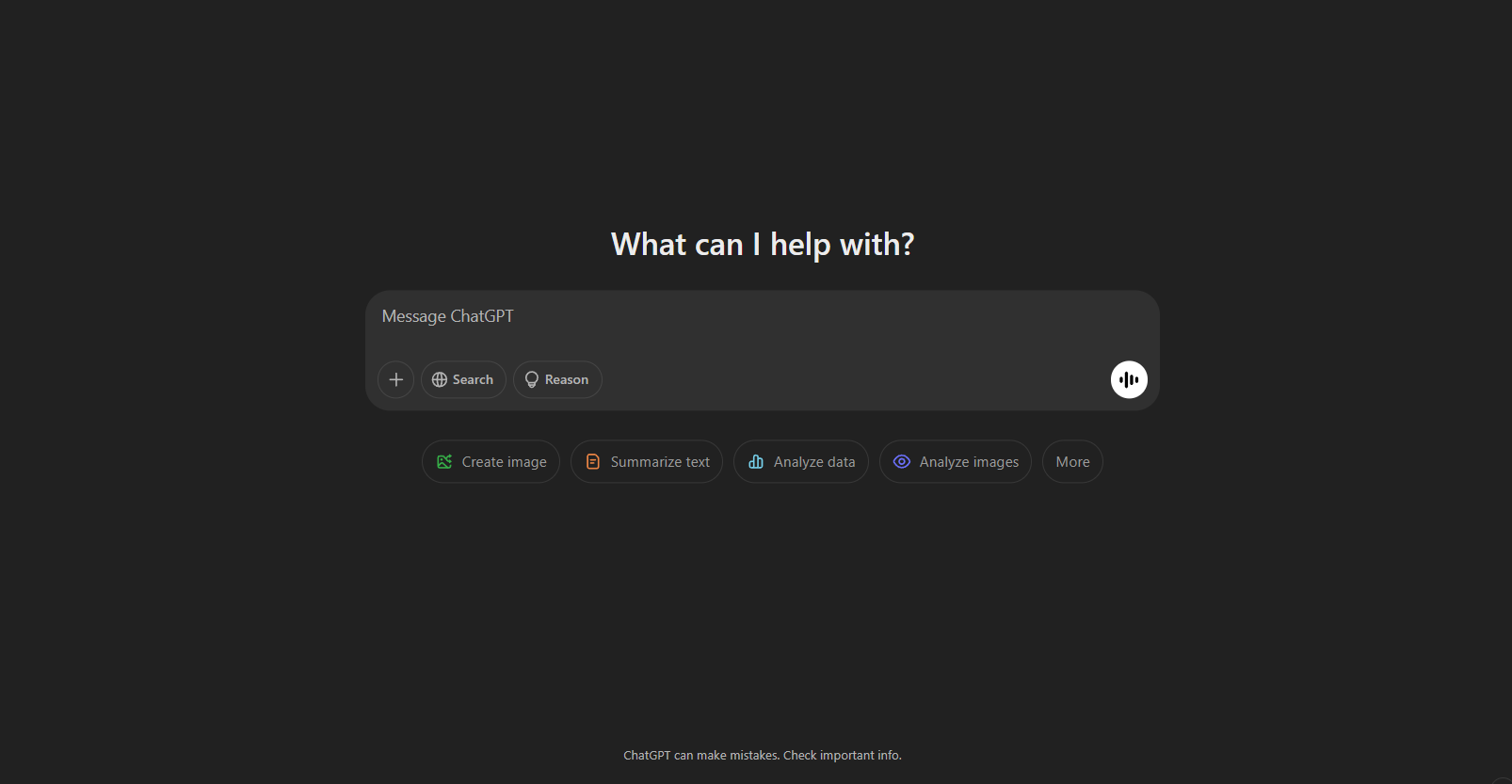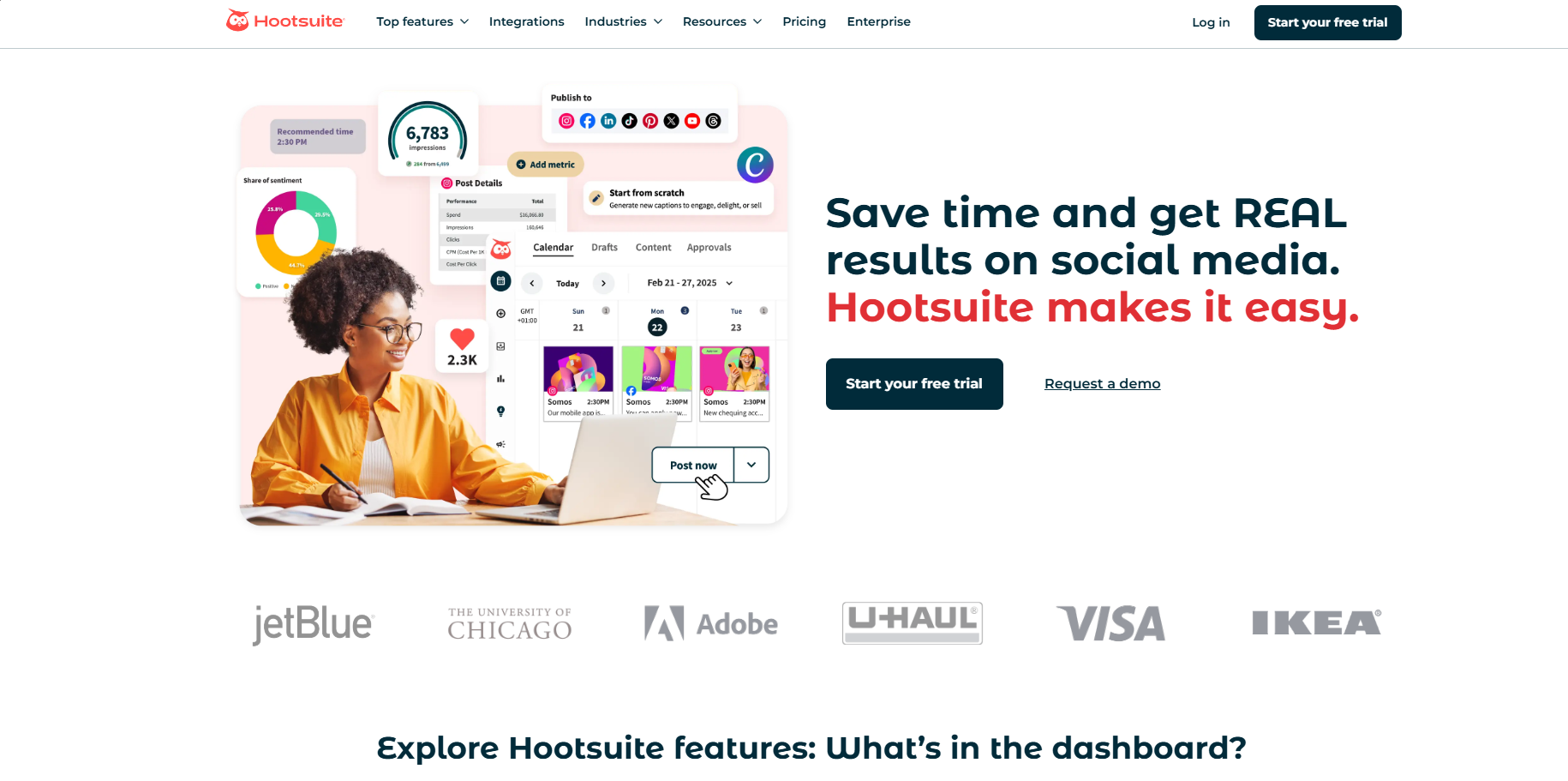
Market research is evolving and, honestly, it’s never been more exciting. Today, businesses big and small are embracing ai tools for market research that help them dig deeper into consumer behavior, understand social media sentiment, and even predict future sales. In this blog, we’re gonna walk you through 10 essential AI tools that can change the way you do market research. We’ll discuss what each tool does, how it benefits your business, and why they might be the perfect fit for your needs. The writing might be a bit inconsistent here and there, but hey – that’s just like real-life conversation, right?
Introduction
If you’ve been in the market research game for a while, you might have noticed that traditional methods are slowly giving way to modern, more efficient ways of collecting and analyzing data. Gone are the days of endless surveys and piles of data that take forever to process. Now, AI tools have entered the scene, ai tools for market research is helping – even if they sometimes seem a bit too smart for their own good.
These AI-powered tools not only save you time but also help you make sense of complex data, giving you insights that are more accurate and actionable. In this post, we’ll explore four main areas where AI tools are making waves:
- Market Research & Consumer Insights: Tools that help you understand what your customers really think.
- Social Media & Sentiment Analysis: Tools that keep you up-to-date with what people are saying about your brand on social platforms.
- Survey & Audience Insights: Tools that make creating and analyzing surveys less of a chore.
- Product & Sales Forecasting: Tools that help you predict trends and make smarter decisions about your products.
Grab a cup of coffee and settle in as we dive into these topics, sharing some insights in a relaxed, conversational tone. The style is inspired by blogs like the one from Quantilope, which are clear, engaging, and sometimes a bit informal. We’re keeping it real here with a natural flow, a few grammar quirks, and some playful inconsistencies – just like a real chat.
Market Research & Consumer Insights
Understanding your customers is the heart and soul of any business. This section covers a few AI tools that are particularly good at helping you gather and analyze consumer data.

ChatGPT (Plus/Enterprise)
What it does:
ChatGPT is more than just a chat assistant – it’s an AI tool that can analyze customer feedback, summarize research reports, and even generate insights from vast amounts of market data. Imagine having a conversation with your data, and getting clear answers on what your customers are thinking.
How it helps:
- Feedback Analysis: It reads through tons of customer reviews, surveys, and social media posts to pick up on trends and themes.
- Report Summaries: Instead of slogging through long research documents, you can ask ChatGPT for a neat summary of the key points.
- Idea Generation: It can even help spark new ideas for strategies or products based on what it finds in your data.
Why it stands out:
While some tools only spit out raw data, ChatGPT understands context. Sure, it might sometimes miss a nuance here and there, but overall, its ability to communicate in natural language makes it a handy tool for those who aren’t data scientists by trade.
NielsenIQ
What it does:
NielsenIQ has long been a trusted name in market research, and now it’s supercharged with AI. It dives deep into consumer behavior and retail trends, providing detailed analytics that can really help you understand what’s happening in your market.
How it helps:
- Consumer Behavior Insights: It tracks how people shop, what they like, and even what might be turning them away from a product.
- Retail Analytics: It gives you a peek into the retail world – like which products are trending and which ones aren’t performing as expected.
- Data-Driven Decisions: With reliable, up-to-date information, you can make smarter decisions about where to invest your time and money.
Why it stands out:
NielsenIQ is known for its accuracy and depth. Even if sometimes the data seems overwhelming, its integration of AI makes everything more manageable, ensuring you get insights that are both accurate and actionable.
Statista
What it does:
Statista is like your go-to library for market data. It offers loads of stats, trends, and forecasts across a wide range of industries. Whether you’re looking for consumer data or industry reports, Statista has you covered.
How it helps:
- Comprehensive Data: From market trends to specific industry forecasts, it’s all here in one place.
- Easy-to-Understand Visuals: Charts and graphs make the data easy to digest, even if you’re not a numbers expert.
- Quick Insights: You can quickly find the stats you need without having to dig through endless reports.
Why it stands out:
Statista’s user-friendly interface and extensive data make it a must-have for anyone doing market research. Sure, sometimes the sheer volume of information can be a bit much, but it’s all laid out in a way that’s pretty accessible.
Think with Google
What it does:
Think with Google is an amazing resource that leverages Google’s vast data pool to provide consumer insights and trend analyses. It’s not a tool in the traditional sense, but more like a treasure trove of research, case studies, and articles.
How it helps:
- Trend Spotting: It uses search data to show what’s trending right now, giving you a heads-up on emerging consumer interests.
- In-Depth Articles: The content here isn’t just data; it includes detailed articles that explain why trends are happening and how you can use them in your business.
- Practical Tips: Think with Google often includes actionable advice that you can apply to your own strategies.
Why it stands out:
Thanks to Google’s massive data collection, this platform gives insights that are both broad and deep. Even though its style can sometimes be a bit corporate, the practical advice it offers is clear and useful for marketers at all levels.
Social Media & Sentiment Analysis
Social media is where the world talks – and it’s a goldmine for understanding public sentiment. Let’s check out some tools that can help you tap into these conversations.
Brandwatch
What it does:
Brandwatch is a powerful social listening tool that monitors online conversations and tracks mentions of your brand across social media platforms. It’s like having your very own digital detective.
How it helps:
- Sentiment Analysis: It evaluates the tone of online conversations to tell you if people are feeling positive, negative, or neutral about your brand.
- Trend Identification: It keeps an eye on trending topics and hashtags that relate to your business.
- Competitive Insights: By monitoring your competitors, Brandwatch can show you how you stack up in the market.
Why it stands out:
Its ability to sift through mountains of data and deliver clear insights is a real strength. However, sometimes its output can feel a bit too technical, but once you get used to it, the value is undeniable.
Hootsuite Insights (Powered by Brandwatch)
What it does:
This tool is a neat mash-up of Hootsuite’s social media management and Brandwatch’s analytic prowess. It makes tracking social sentiment and brand mentions a lot simpler.
How it helps:
- Unified Dashboard: You can manage your social media accounts and analyze the data all in one place.
- Real-Time Data: It gives you real-time insights, so you always know what’s happening with your brand online.
- Easy Reporting: Create and share reports that break down the social media trends affecting your business.
Why it stands out:
While Hootsuite Insights offers a convenient one-stop shop for managing and analyzing social media, there might be moments where the integration feels a tad clunky. Still, the overall experience is very effective for busy marketers.
Sprout Social
What it does:
Sprout Social is another robust tool that focuses on social media analytics. It uses AI to provide insights into your audience’s behavior and engagement patterns.
How it helps:
- Audience Analysis: Learn about who your followers are, what they like, and how they interact with your posts.
- Engagement Metrics: Keep track of likes, shares, and comments to see which content is really resonating.
- Strategy Development: Use the insights to fine-tune your social media strategy and improve your online presence.
Why it stands out:
Sprout Social’s interface is clean and easy to navigate, making it great for teams that aren’t full-on tech experts. Although sometimes the metrics might feel a bit too detailed, it’s a solid choice for anyone serious about understanding their social media impact.
Survey & Audience Insights
Surveys are still a powerful way to get direct feedback from your customers, and AI tools have made them even better. In this section, we cover tools that help you design, launch, and analyze surveys with ease.
Qualtrics
What it does:
Qualtrics is a versatile survey platform that leverages AI to improve customer experience analytics. It helps you create surveys, gather responses, and analyze the results in a meaningful way.
How it helps:
- Smart Survey Design: With AI-powered suggestions, you can build surveys that are more likely to yield useful responses.
- In-Depth Analytics: It breaks down the survey data to reveal trends and patterns you might miss otherwise.
- Improved Customer Experience: By understanding the feedback, you can make better decisions to improve your products or services.
Why it stands out:
Even though Qualtrics has a lot of features (sometimes it can be a bit overwhelming), its ease-of-use and robust analytics make it a top pick for businesses looking to improve their customer experience.
SurveyMonkey Genius
What it does:
SurveyMonkey Genius is an extension of the popular SurveyMonkey tool, adding an AI layer that optimizes your surveys and helps analyze the responses quickly.
How it helps:
- Question Optimization: The AI reviews your survey questions and suggests improvements for clarity and effectiveness.
- Quick Data Analysis: It processes the responses to show you key insights, saving you time and effort.
- User-Friendly: Designed with everyone in mind, it’s great for users who might not have a background in survey design or data analysis.
Why it stands out:
SurveyMonkey Genius is perfect for businesses that need to run surveys fast and get the results without a lot of fuss. Sure, sometimes its suggestions might feel a bit generic, but overall, it does the job well.
Pollfish
What it does:
Pollfish uses AI to help you reach the right audience for your surveys. It’s particularly useful for market research because it can target specific groups based on demographics, ensuring that your data is relevant.
How it helps:
- Targeted Surveys: Using smart targeting, Pollfish ensures your survey reaches the right people.
- Rapid Results: You get responses quickly, which means you can act on the insights in near real-time.
- Flexible Options: The tool lets you customize surveys to fit your particular needs, making it adaptable to various research projects.
Why it stands out:
If you’re looking to quickly gather accurate market data, Pollfish can be a lifesaver. Its AI targeting means you won’t waste time with irrelevant responses – though occasionally, the targeting might feel a little off, the overall benefit is clear.
Product & Sales Forecasting

Forecasting what’s coming next in the market can be challenging. Thankfully, AI tools can help you predict trends, analyze sales data, and make strategic decisions about your products. Let’s take a look at some tools that do just that.
Crimson Hexagon (Merged with Brandwatch)
What it does:
Crimson Hexagon, which has now merged with Brandwatch, uses advanced AI to predict consumer behavior and market trends. It gathers data from social media, news outlets, and other online sources to help you see where the market might be heading.
How it helps:
- Consumer Predictions: It uses historical data to forecast future consumer behavior, helping you prepare for what’s next.
- Trend Analysis: Identify emerging trends before they become mainstream, so you can adjust your strategy accordingly.
- Competitive Edge: By understanding the trends affecting your competitors, you can make smarter decisions about your own products and services.
Why it stands out:
The power of combining Brandwatch’s social listening with Crimson Hexagon’s forecasting is huge. Sometimes, the sheer amount of data can seem confusing, but if you take your time to learn its quirks, you’ll find it to be an invaluable tool for long-term planning.
Tableau (AI-Powered Analytics)
What it does:
Tableau is a data visualization tool that has now integrated AI-powered analytics. It turns complex data sets into interactive visual stories that are easy to understand, even if you’re not a data expert.
How it helps:
- Data Visualization: With customizable dashboards, you can turn raw data into easy-to-read charts and graphs.
- AI-Driven Insights: The tool helps you spot trends and patterns that might not be obvious at first glance.
- Custom Reports: Build reports that focus on the metrics that matter most to your business, making data analysis less of a chore.
Why it stands out:
Tableau’s natural ability to simplify complex information is what makes it so appealing. Though sometimes the setup might seem a bit technical, the end results are worth it, especially when you need to share insights with a wider team.
Amazon Market Research Tools (Helium 10, Jungle Scout)
What they do:
For e-commerce businesses, Amazon market research tools like Helium 10 and Jungle Scout are essential. They use AI to help you research products, track market trends, and forecast sales – all tailored specifically for the Amazon marketplace.
How they help:
- Product Discovery: Identify trending products and uncover niche markets that are ripe for growth.
- Sales Forecasting: Use historical data and AI predictions to estimate future sales, so you can manage inventory effectively.
- Competitive Analysis: Understand how your competitors are performing, giving you insights on where you can improve or differentiate your offerings.
Why they stand out:
If you’re in the e-commerce game, these tools offer specialized insights that general market research tools just can’t match. They’re designed for the fast-paced world of online retail, where knowing what’s trending can be the difference between success and missed opportunities.
Emerging Trends in AI Market Research
The field of AI in market research is constantly evolving. Here are a few trends that we see shaping the future of this space:
Predictive Analytics
One of the coolest developments right now is the rise of predictive analytics. AI tools are getting better at looking at historical data and forecasting what might happen next. This is a huge help when trying to plan ahead – though sometimes the predictions can be off, they usually provide a good baseline for decision-making.
Hyper-Personalization
Consumers expect personalized experiences now more than ever. With the help of AI, businesses can tailor their marketing, products, and services to individual preferences. It’s not always perfect, and sometimes the personalization feels a little too “by the book,” but it definitely helps in creating a closer connection with customers.
Integration of Multiple Data Sources
Another trend is the move towards integrating data from multiple sources. Rather than looking at isolated data points, modern AI tools pull in information from social media, surveys, sales data, and more to give a complete picture of the market. This can lead to some inconsistencies in data presentation sometimes, but overall, it makes the insights much richer.
Automation of Routine Tasks
Automation is one of the biggest benefits of AI. Routine tasks – like data collection and basic analysis – can be handled automatically, freeing up your team to focus on strategy and creative thinking. Even if sometimes the automated outputs need a little human touch to polish, the time saved is a huge plus.
Improved Data Visualization
Last but not least, data visualization is getting a makeover thanks to AI. Modern tools make it easier to see trends and patterns at a glance, even for people who aren’t data experts. Although the visuals can sometimes be a bit inconsistent in style, they are generally designed to help everyone, including those whose first language isn’t English, to understand complex data.
Conclusion
So there you have it – 10 essential AI tools that can help transform your market research. From understanding customer sentiments with ChatGPT and NielsenIQ to tracking social media trends with Brandwatch and Hootsuite Insights, these tools offer a range of functionalities designed to make your life easier. And let’s not forget about the survey tools like Qualtrics, SurveyMonkey Genius, and Pollfish, which can help you collect data directly from your target audience in a more efficient and insightful way.
For e-commerce and product forecasting, tools like Crimson Hexagon (now merged with Brandwatch), Tableau’s visual insights, and Amazon-specific tools like Helium 10 and Jungle Scout can provide a competitive edge. Sure, each tool has its quirks – sometimes a little too much data here, a bit of clunky integration there – but overall, they bring a lot of value by making complex market research more accessible.
The future of market research is clearly in the hands of AI. The integration of predictive analytics, hyper-personalization, and automated routine tasks means that businesses can make smarter, faster decisions. Even if the tools aren’t always 100% perfect and sometimes the reports come out with slight grammatical hiccups or style inconsistencies, the overall benefit is that you’re better equipped to understand your market and your customers.
We know that switching to new tools can be a bit daunting, especially if you’re used to the old ways of doing things. But embracing these AI-driven solutions can give you a leg up on the competition. Even if there are moments where the tools don’t align perfectly with your workflow, remember that the goal is to gather actionable insights that drive better decisions and, ultimately, business growth.
To sum up, here’s a quick recap of what we covered:
- Market Research & Consumer Insights: Tools like ChatGPT, NielsenIQ, Statista, and Think with Google give you the data and the context you need to understand your customers better.
- Social Media & Sentiment Analysis: With tools like Brandwatch, Hootsuite Insights, and Sprout Social, you can keep a pulse on what’s being said about your brand online and react in real time.
- Survey & Audience Insights: Platforms like Qualtrics, SurveyMonkey Genius, and Pollfish streamline the process of gathering direct feedback from your audience.
- Product & Sales Forecasting: For those in e-commerce and product management, Crimson Hexagon, Tableau, and Amazon Market Research Tools help you predict trends and stay ahead of the competition.
key takeaway is that these AI tools are here to help you get a better handle on market research. They allow you to automate the routine stuff, dig deeper into data, and ultimately make more informed decisions. Even if everything isn’t always perfectly aligned, the insights you gain are more than worth the occasional hiccup.
As AI continues to develop, expect even more innovative features and improvements in these tools. It’s an exciting time to be involved in market research, as the blend of technology and human creativity opens up endless possibilities. If you haven’t tried incorporating AI into your research process yet, now might be the perfect time to give it a go – you might just be surprised at how much easier it makes your work.
Thanks for sticking with us through this guide. We hope it’s been both informative and a bit fun to read – a little like chatting with an old friend who’s super into technology and market trends. If you’ve got any questions or want to share your own experiences with AI tools in market research, drop a comment below. We’re always happy to hear from you.
Remember, successful market research isn’t just about collecting data – it’s about making sense of it, even if that means dealing with a few quirks along the way. Embrace the change, experiment with these tools, and let AI help you navigate the ever-changing world of consumer behavior.
Happy researching, and here’s to making smarter, data-driven decisions (even if it means the occasional grammatical slip-up along the journey
Also Read About Digital Marketing vs Traditional Marketing






